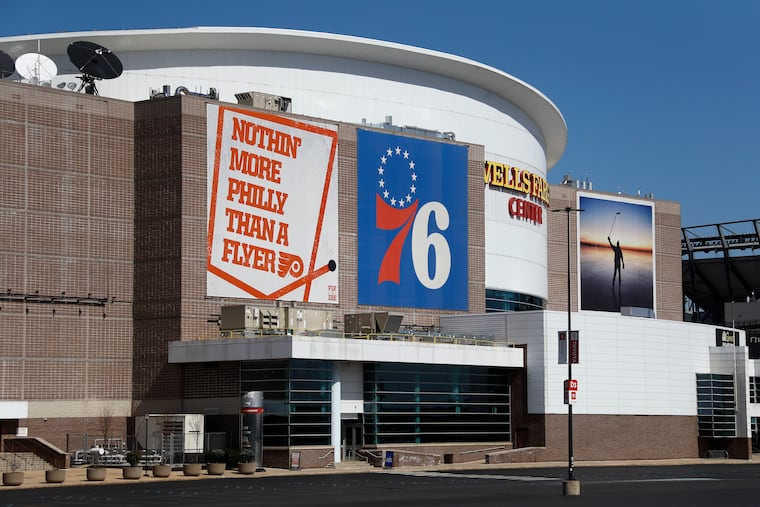A new Sixers arena at Penn’s Landing would be a step back for the waterfront | Editorial
The proposed Sixers arena would encourage more cars and downplay civic input, public access, and connection to the city’s street grid.

This week, one NBA team showed its relevance and concern for the challenges of our current times when the Milwaukee Bucks refused to participate in a playoff game to protest the shooting by police of Jacob Blake in Kenosha, Wis. Other teams and players joined in solidarity.
Meanwhile, by proposing a new sports arena for one of the most prime waterfront spots in the city, Philadelphia’s NBA team suggested an out-of-touch organization still stuck in the past. The Sixers’ proposal to move out of its current home at the Wells Fargo Center and build an arena on Penn’s Landing harkens back to a time before the turn of this century when the city’s Delaware River waterfront was a bleak, underutilized landscape that had been severed from the city with the construction of I-95, and became a wasteland of big box stores and severely limited public access.
The idea also recalls a time when the building of sports complexes was touted as an economic engine, especially for cities, primarily as a way to justify the massive public subsidies often required to underwrite their construction. That went hand in hand with the notion of “sports-entertainment complexes” that incorporate dining, shopping, and entertainment that promised to revitalize the economies of whole regions. These complexes got touted as part of the “experience economy.” In reality, they have rarely experienced anything but struggle, as Chester’s Philadelphia Union soccer stadium, among others, has shown.
Still it doesn’t stop lawmakers and leaders from creating tax breaks and packages in exchange for the promise of job creation and the oceans of revenue that will fill public coffers. Years later, the actual benefits are rarely scrutinized.
» READ MORE: Sixers targeting Penn's Landing for new basketball arena
The details of the Sixers’ proposal are scarce, since it was a response to a request for proposals by the Delaware River Waterfront Corporation (DRWC), to develop two parcels totaling 11 acres on Penn’s landing. (DRWC anticipates the conclusion of the selection process in about a month.) According to an Inquirer report, the Sixers promise $1 billion in economic benefits for communities of color through construction and operations.
The organization would finance the project using a program called Neighborhood Improvement Zone (NIZ), which issues development bonds against future tax revenues. While this may be more palatable than the $82 million tax break the Sixers received from New Jersey six years ago for a Camden practice facility, it’s still taxpayer support, and worth skepticism, not just because it comes during a severe economic crisis, but because the true price tag is unknown. And it ignores the additional costs of what is sure to be public infrastructure investments that such a complex could require, especially one reliant on automobile traffic.
What is known is that the Sixers’ lease at the Wells Fargo Center, which it shares with the Flyers, expires in 2031. It is part of a sports complex that was built with the help of $1 billion in taxpayer subsidies. It’s unclear why the Sixers want a new venue, or how its absence would impact the economic value of the complex.
» READ MORE: The case for making the Delaware Waterfront part of the city's grid
The Penn’s Landing parcels could easily be considered among the most significant in the city in terms of location and impact on the waterfront as well as the city as a whole. A public process that began nearly two decades ago to smartly activate what should have been the crown jewel of the city led to a master plan with civic engagement at its heart. The DRWC has been an able steward of that plan, with subsequent development of the waterfront including a number of parks in addition to residential and other development. (Recently a Bart Blatstein proposal to build a giant Wawa gas station on the waterfront was rejected by the zoning board.)
Building a sports arena at Penn’s Landing would represent a step back for the waterfront and for the process that has been in place for more than a decade by encouraging more cars and downplaying civic input, public access, and connection to the city’s street grid. It would allow the singular vision of one company to dominate a significant part of the waterfront. The inclusion of public amenities is not the same thing as a space that has the interests and needs of the public at its center. The public has been a driving force and spirit behind how the Delaware waterfront has evolved so far. That should continue.